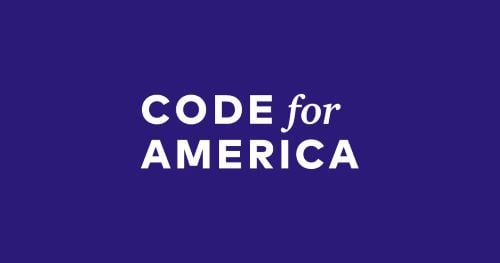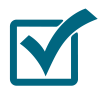The public health emergency has significantly altered the delivery of government assistance programs over the past four years and has also spurred on a great deal of innovation to better serve those in need. Traditional concepts of what it looks like to apply for benefits have drastically changed.
Currently 77% of all safety net programs have online applications and 52% of benefits programs have websites that are smart phone friendly with responsive design. Further, in the last four years, 44 new or revamped online applications for government assistance were launched across the country. Considering how logistically difficult a launch like this can be, from procurement to go-live, this number is astounding.
As states begin to reinstate renewal processes with the unwinding of the COVID-19 public health emergency, streamlining processes for benefits workers and increasing access for safety net clients is more important now than ever. Clearly states are recognizing the need to implement new benefits portals or modernize existing platforms to increase access and efficiency. However, few have as interesting an origin story as Minnesota’s MNbenefits, providing an example for others of a non-traditional path to implementing impactful statewide systems.
![]()
Code for America: Using Human-Centered Technology to Break Down Barriers
 Code for America, a civic tech nonprofit, has been working to improve government in meaningful ways since 2009. As part of that work, they target several social issues, including the national safety net.
Code for America, a civic tech nonprofit, has been working to improve government in meaningful ways since 2009. As part of that work, they target several social issues, including the national safety net.
In 2019, Code for America set out to understand the experience for people across the country looking to apply for government benefits online. They found much room for improvement, particularly in mobile-friendly online access, which is critically important for lower income Americans.
Shortly after completing their assessment, they approached the state of Minnesota with an opportunity to replace the existing ApplyMN application with one that streamlined the process for both residents and county/Tribal Nation workers.
The application process at the time was independently assessed to be cumbersome and inefficient, taking over an hour to complete. Lisa Barnidge, Enterprise Business Transformation Manager for Minnesota Department of Human Services (DHS), remembers, “They [Code for America] had done their homework and came prepared to point out the places in our current application process causing problems. And they came with a lot of federal policy knowledge.”
 From the start, Code for America laid out a roadmap for development and implementation of the future platform, MNbenefits. However, the eventual goal was for the state to take over long-term development, maintenance, and enhancements—a first for Code for America. Minnesota would own the product long-term, which would necessitate a commitment of resources throughout the project and fully at hand-off. As Dustin Palmer, Program Director on Code for America’s Safety Net team, described, “We approached Minnesota with the idea that we could partner together to co-create a more welcoming and effective ‘digital front door’ for their safety net services, with the ultimate goal of empowering them to fully own and improve on the product in the future.”
From the start, Code for America laid out a roadmap for development and implementation of the future platform, MNbenefits. However, the eventual goal was for the state to take over long-term development, maintenance, and enhancements—a first for Code for America. Minnesota would own the product long-term, which would necessitate a commitment of resources throughout the project and fully at hand-off. As Dustin Palmer, Program Director on Code for America’s Safety Net team, described, “We approached Minnesota with the idea that we could partner together to co-create a more welcoming and effective ‘digital front door’ for their safety net services, with the ultimate goal of empowering them to fully own and improve on the product in the future.”
![]()
Project Timeline and Key Milestones
 |
The initial discovery began in January of 2020, consisting of quantitative and qualitative research, site visits, and talking to individual counties and Tribal Nations—all critical stakeholders in a county-administered state like Minnesota. Despite how much the world changed a few short months later, Lisa says the project still saw plenty of early successes. “It was a very collaborative process with the counties and Tribal Nations. There were site visits when that was possible, and they [Code for America] interviewed applicants. It all led to some close relationships being built with the counties,” she said. |
 |
Despite COVID delays, the first pilot counties began testing out functionality of the newly developed MNbenefits integrated online application in September of 2020, with an eventual launch statewide, including three tribal nations, by November of 2021. (For those who know how long large state system development and implementation can take, this is an impressive timeline!) In the early phases of the project, MN engineers participated in research and product development, with Minnesota involvement increasing as the partnership continued. |
 |
At the start of 2022 the initial working contract was extended six months, and the state ramped up teams that would support the product and keep its early momentum in place. Mike Hauck, product owner of MNbenefits, recalls that the state hired the necessary engineers and product team who were paired with the Code for America team during these six months to get caught up to speed. Much of the tech stack that Code for America brought to Minnesota was new, so a lot of knowledge transfer needed to occur. “In the first half of 2022, we were still leading development and research sprints, but by March the Minnesota team was running ‘test’ sprints on their own and we would debrief together after,” Dustin said. “They’re now fully independent, and delivering releases every 1-2 weeks, a rarity for safety net benefits applications.” |
 |
Full hand-off to the state team occurred in mid-2022, and the team has adopted many of the lessons learned throughout the project with Code for America. For example, they lead meetings twice a month that are open to all counties, Tribal Nations, and other stakeholders in the state to report on new developments and metrics, problem solve issues, and celebrate successes. “I’ve been really happy [the biweekly workgroup] was something that was established early on. As we took over, it was very important for us to make sure we kept that workgroup going,” Mike said. “It’s very meaningful to us to receive that regular feedback from the counties and Tribal Nations.” |
As a regular attendee of these workgroups, I can personally attest to a unique level of collaboration—not just between the state and vendors, but also county and Tribal Nation stakeholders—on these calls. County participants have also noted how much they appreciate that their feedback has been heard and continuous improvements have been made along the way.
A recent example of this continuous improvement includes the ability to upload the health care renewal application and associated documents to the platform, supporting the daunting task of tackling a backlog of renewals now needed with the unwinding of the public health emergency.
![]()
Results and Lessons Learned
The project has created big impact while proving to be a highly collaborative experience for all stakeholders involved. The MNbenefits launch not only integrated applications that used to be separate processes, but Dustin shared the process and timeline to apply has been greatly improved as well. “It went from over 60 minutes on average, to just 15 minutes on average—and that number has held steady since. It’s one of the best in the country now,” he said.
Additionally, each time an application is completed, the resident is invited to rate their experience—and satisfaction is high. On the most recent MNbenefits workgroup call it was shared that for the month of May, 72% of MNbenefits clients said they were happy with the application process, with another 25% neutral and only 3% dissatisfied. For Minnesota residents, critical access has been expanded—37% of applications in May were completed outside of business hours.
When asked what advice they might have for other states going through modernization projects, Mike shared:
“Change, especially when it comes to modernization, can be difficult. It can be uncomfortable. But be comfortable with being uncomfortable for the right reasons. You’re doing this with the intention of making things better for the people you serve, so we can work through these difficult challenges with the values and outcomes in mind.”
Lisa added, “I’d want other states to know you don’t have to start from scratch. We always think we have to start from scratch because we are so different from state to state. Be willing to take help when it is offered. It can be scary to let in outsiders, but worth it.”
Both are great points, and key takeaways that I also gleaned from my conversations with Code for America and Minnesota DHS. A few more worth noting:
- Procurement of large, state-wide systems can be a bear—from requirements gathering, budget conversations, negotiations, RFP writing, and careful selection of vendors. It’s a huge undertaking for a good reason, as tax-payer dollars are on the line and budgets are not infinite (to say the least). States should note, however, that there are different pathways towards achieving goals available, and that taking creative leaps with smaller or more unique vendors can achieve great results.
- The procurement of any new technology system, while cumbersome, is actually the easy part. The magic is in change management, and it cannot be understated how important it is to consider and prioritize change management efforts in every step of procurement and implementation. As I say at Northwoods often, our projects are actually change management projects, with a technology component. There are some wonderful, tangible strategies that Code for America employed around change management (thoughtful design, stakeholder buy-in, ongoing consistent communication, etc.) that can be taken from this story and applied elsewhere.
- When working with outside entities, trust is everything. Look for vendors and partners that share your same values in the outcomes of the project, and truly understand the importance of that collaboration across all levels of government—right down to the worker and client experience itself.
What’s Next?
Minnesota was one of the first states to join Code for America’s Safety Net Innovation Lab, a groundbreaking, multi-year initiative to transform America’s safety net. Through 2028, the Innovation Lab will work with 15 states to unlock $30 billion in benefits across food assistance, health care, and other basic needs for 13 million people.
During that time, Code for America will work shoulder to shoulder with Minnesota on improving the benefits renewal process for safety net benefits. States in the Innovation Lab will also regularly meet to share knowledge and engage in skill building sessions such as strategies for vendor management and using texting to engage and support clients.
It’s clear this unique model of product implementation is one to watch. Dustin encourages states interested in joining the Innovation Lab “to reach out with anything they’re really excited about concerning the social safety net. We’ll take any call!” You can submit this form if you’re interested in learning more about the Code for America Safety Net Innovation Lab.
The impacts of this work are being felt by people across the country, and states and vendors alike can learn much from the strategies employed here. Much progress has been made across the country in providing better access to critical government benefits, and it’s exciting to watch this work continue.


